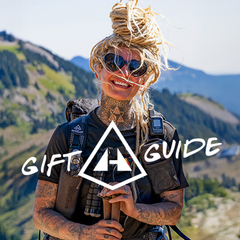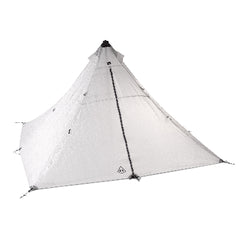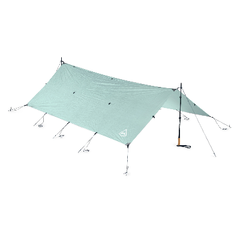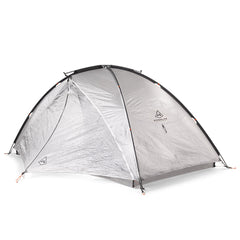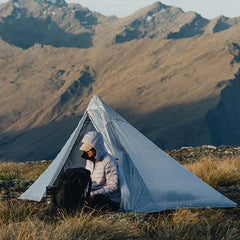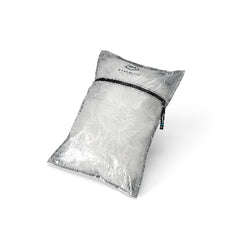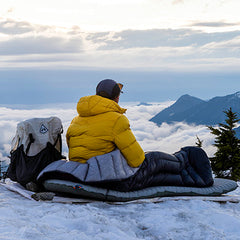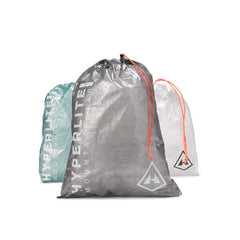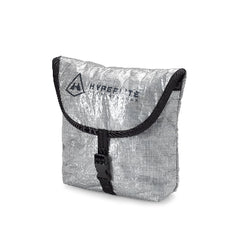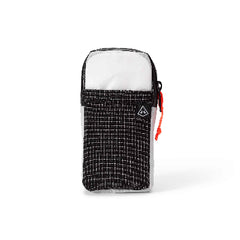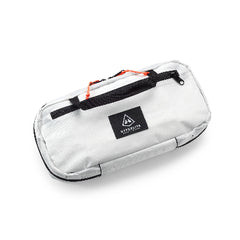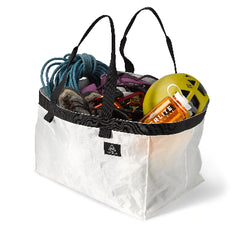Words and Photos by Emily Bei Cheng @alpinemily
“Branch!” I hollered. Peter ducked just in time to avoid the branch whipping back toward him. Deadfall. Rope snags. The Boston Basin approach was a bushwhack obstacle course. I didn't remember it like this–it's funny how memory edits out the slog and clings to the beauty.

In 2017 I had come here with a Sacramento-based mountaineering club. We were chased down Forbidden Peak by a hail storm. I remember holding my breath as I downclimbed slick, wet slab, and set up rappels with numb fingers. Relief and exhaustion hit hard as we staggered back to camp. Back then, I was eager to test myself in every way to build up my alpine experience. Every other Friday, I’d haul my mountaineering pack to the office, then head straight to the Greyhound station for a bus bound for Sacramento. Then, I’d pile into a car headed to the Eastern Sierra with people I barely knew. We’d climb all weekend and drive back late Sunday night. While the others returned home to real beds, I went to the Greyhound station where I’d wait for the early morning bus back to San Francisco, arriving just in time for my Monday meetings. Back then, my focus was on the climbing. My climbing partners and I swapped stories on long drives then slipped out of each other’s lives. We were strangers bound by a shared love of the mountains.


Eight years later, I came back with friends. Alison, McKenzi, and I had done the Ptarmigan Traverse the summer before as an all-women team. This time Peter and Young joined us, rounding out a team of five. The North Cascades keep their beauty hidden deep in the trees; you only see their scale once you hike high enough. Our approach was a tangle of steep brush that eventually opened up to Boston Basin. Creeks braiding through heather meadows, wildflowers dotting green slopes, tufts of mountain goat hair snagged in the fir trees–little details from eight years ago slot back into place.

We warmed up on Sahale Peak. A traverse of Quien Sabe glacier and a pitch of rock climbing brought us to the summit. Back at camp with plenty of daylight to spare, Mckenzi pulled out her sketchbook and soon we were trading portraits and laughing at our drawings. We also took time to discuss tomorrow’s route up Forbidden Peak. One option was the standard snow gully. It was likely though, that the snow bridge over the bergshrund had already collapsed for the season. The other option was “Cat Scratch gully,” notorious for its loose rocks. We weighed the tradeoffs over an early dinner and we were in our tents to rest before the sun went down.



Summit day delivered. A cloudless sky. Still air. Peter led a few pitches and I led the next. The other three climbed as a second rope team, close behind us. The climbing was exposed and beautiful: knife-edged ridges plummeting into folds of green meadow and alpine lakes. Above us, the sky was bright. What made my heart pound and stomach twist eight years ago brought me an overwhelming sense of peace, now. It was hard to believe this was the same mountain. The 2017 trip had been a claustrophobic gray. Now it was all light.



Forbidden Peak is a popular climb and we knew we would likely bottleneck with other parties on the ridge. As we waited for other teams, I soaked in the 360 degree views and counted the peaks one by one. Seven layers of ridgeline and over one hundred peaks in sight. This reminded me of the grounding exercise of counting colors to calm an anxious nervous system. In the city, this is a “mindfulness practice” people learn. Up here, it happens instinctively.


From the summit we reversed the ridge and dropped into Cat Scratch gully. With five climbers, we opted to rappel rather than risk knocking loose rocks onto each other. Six more rappels with a team of five climbers took time. Time was measured by the setting sun. The first rappel dropped us into golden light as the sunset turned the tips of peaks orange. On the third rappel, the moon rose and painted the sky pink and the mountains silver. By the sixth, our headlamps flickered on and the first of constellations were starting to show. The ridgeline was now just a black silhouette.

Every landscape bears a different personality at night. The flowers of upper Boston Basin glowed under our headlamps and danced like a field of fireflies. We were tired but no one complained, not even when we hiked past the turnoff to camp and had to backtrack. After a final stream crossing, we dropped our packs and sprawled on the ground, laughing with joy and relief. We lay on our backs and shared a moment gazing at the stars. Most summits end with the instinctive rush to retreat into tents and pass out, but this moment was worth stretching longer.

Climbers talk about redemption summits—the ones you miss the first time and return to years later. The website Peakbagger even tracks years between attempts. My own Peakbagger profile is a collection of these stories. Banner Peak: in 2013 we showed up unprepared with microspikes and bike helmets, and two years later, a little wiser, we climbed it the right way. Mount Whitney: altitude sickness turned me around a mile from the summit, and I returned three years later to reach the top. Grand Teton: the route was covered in rime ice on our late-season attempt, and it was eight years before I made it back. Sometimes redemption is quick. Cloudripper: one year. Mount Shasta: just seven days. Sometimes, as with Forbidden Peak, it takes almost a decade.

But the truth is, mountains don’t care if you come back. I wasn’t here to settle a score. As a mountain guide once quipped: “Don’t think about the summit. The summit isn’t thinking about you.” The eight years in-between made this shift in perspective clear: it’s less about ticking peaks, and more about tying in with good friends to experience days you wish could stretch on forever.


